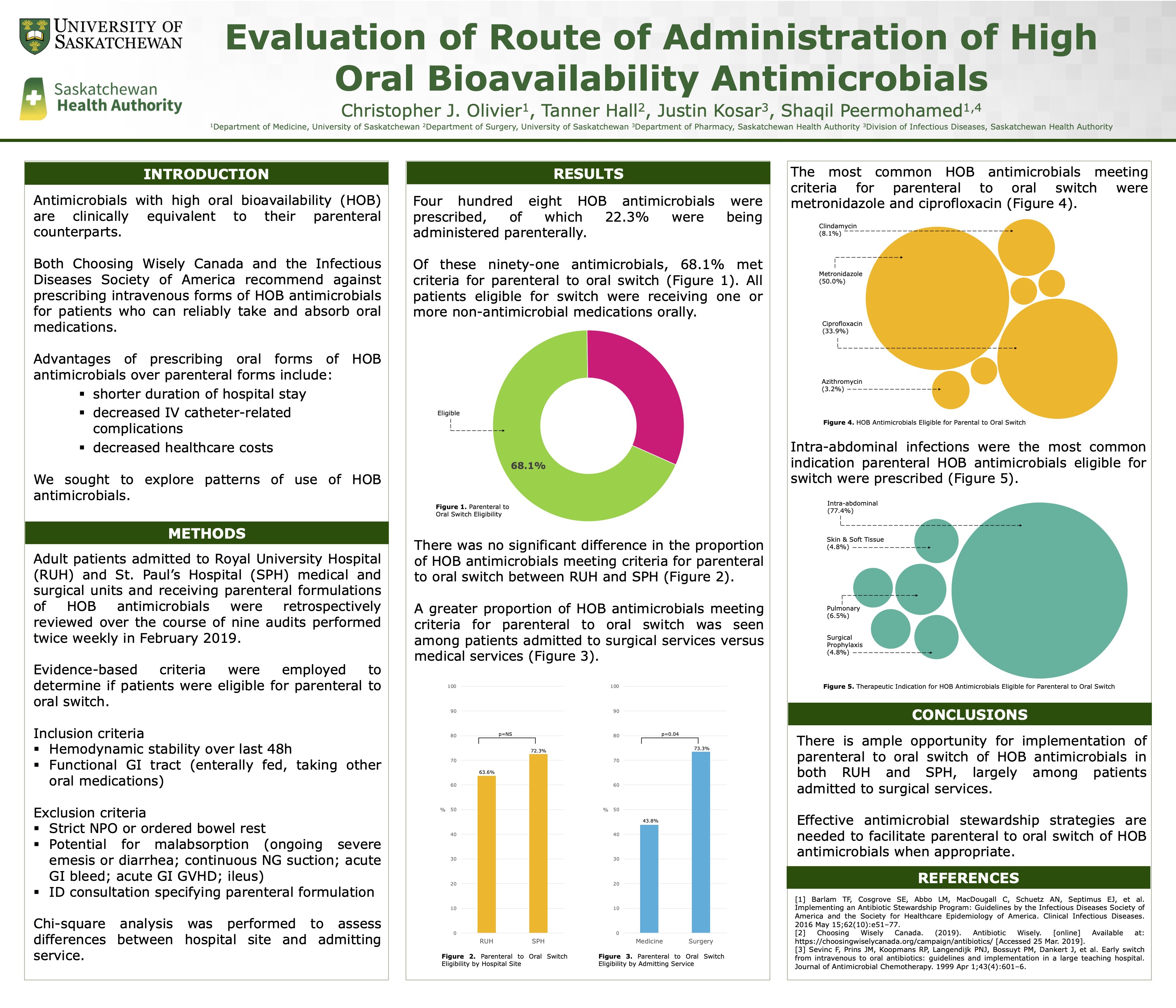
B1.7: Evaluation of Route of Administration of High Oral Bioavailability Antimicrobials
Tanner Hall, Chris Olivier, Shaqil Peermohamed, Justin Kosar
It is a common myth among physicians and patients alike that parenteral antimicrobials are superior to oral antimicrobials. However, antimicrobials with high oral bioavailability (HOB) have clinically equivalent oral and parenteral formulations. Both Choosing Wisely Canada and the Infectious Diseases Society of America recommend against prescribing intravenous forms of HOB antimicrobials for patients who can reliably take and absorb oral medications. Prescribing oral formulations of HOB antimicrobials can confer a multitude of clinical and pharmaco-economic advantages including decreased length of hospital stay, intravenous catheter-related complications and healthcare costs. We sought to explore patterns of use of HOB antimicrobials.
Adult patients admitted to medical and surgical units in two academic medical centers located in Saskatoon, Saskatchewan and receiving parenteral forms of HOB antimicrobials were retrospectively reviewed over eight audits performed twice weekly in February 2019. Standardized criteria were used to assess eligibility for parenteral to oral switch amongst patients receiving HOB antimicrobials. Chi-square analysis was performed to assess differences between medical center and admitting service.
Four hundred eight HOB antimicrobials were prescribed, of which 22.3% were being administered parenterally. Of these ninety-one HOB antimicrobials prescribed to sixty-eight patients, 68.1% met criteria for parenteral to oral switch. The most common HOB antimicrobials meeting criteria for switch were metronidazole (50.0%) and ciprofloxacin (33.9%). There was no significant difference in the proportion of HOB antimicrobials meeting criteria for switch between centers (63.6% vs. 72.3%). A greater proportion of HOB antimicrobials meeting criteria for parenteral to oral switch was seen among patients admitted to surgical services versus medical services (73.3%% vs. 43.8%, p=0.04).
Ample opportunity to optimize parenteral to oral switch of HOB antimicrobials exists in both of our medical centers, largely among patients admitted to surgical services. Effective antimicrobial stewardship strategies are needed to facilitate parenteral to oral switch of HOB antimicrobials when appropriate.
